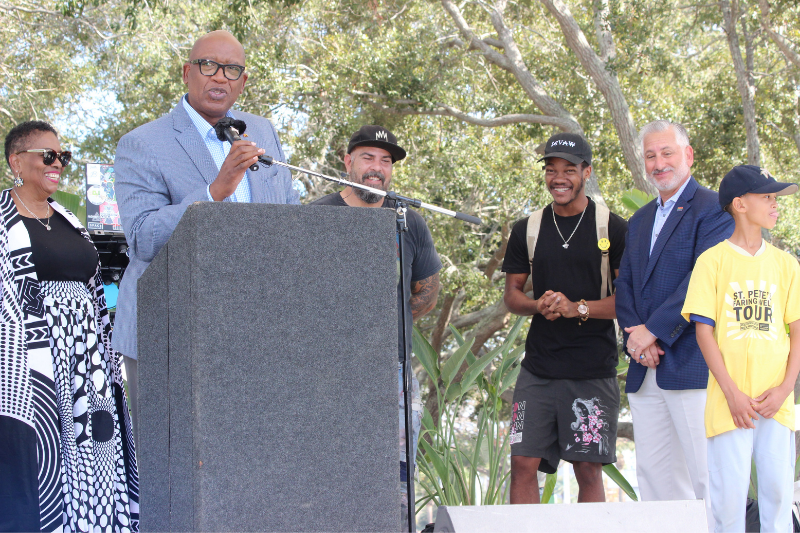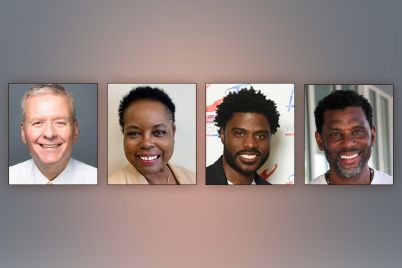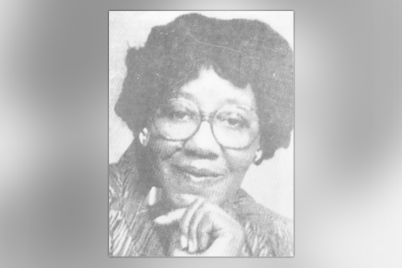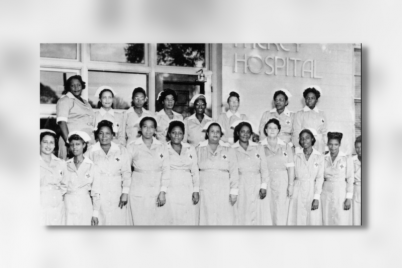Mayor-elect Ken Welch regaled the crowd with stories of growing up in the Gas Plant neighborhood on Sunday, Dec. 12 at the Gas Plant/Laurel Park Reunion. Left, Gwendolyn Reese, artist Reid Jenkins and Jabari Reed, aka iBOMS, Mayor Rick Kriseman, and one of many students that helped with the mural on the side of Campbell Park Recreation Center.
FRANK DROUZAS, Staff Writer
ST. PETERSBURG — Former residents and family members of the Gas Plant and Laurel Park neighborhoods gathered on Dec. 12 for a reunion to tell their stories, eat delicious food, and share their memories of growing up in these once vibrant enclaves.
The Voices Heard, Voices Matter of the Bloomberg Harvard group, African American Heritage Association (AAHA), Foundation for a Healthy St. Petersburg, the Institute on Black Life at the University of South Florida, and the City of St. Petersburg pooled resources and produced an afternoon to remember.
Gwendolyn Reese, president of the AAHA, said we always hear about the Tropicana Field redevelopment, but over the years, the Gas Plant and Laurel Park neighborhoods were frequently portrayed as blighted, that “of problems and poverty.”
“But those of us who lived there — and I did at 1305 Fifth Ave. S — that was not our neighborhood,” she asserted. “So, today we are here to tell our story, by us. Those of us who lived there, it is time for our stories to be told.”
It is a story of strength, resiliency, community, faith, and support, Reese said, adding that the day was about celebrating the people, the businesses, and vibrancy of the community.
Rev. Watson Haynes recalled his days growing up in the Gas Plant neighborhood, where he would hop across a fence and climb up the gas cylinders to view the city as far as his eyes could see.
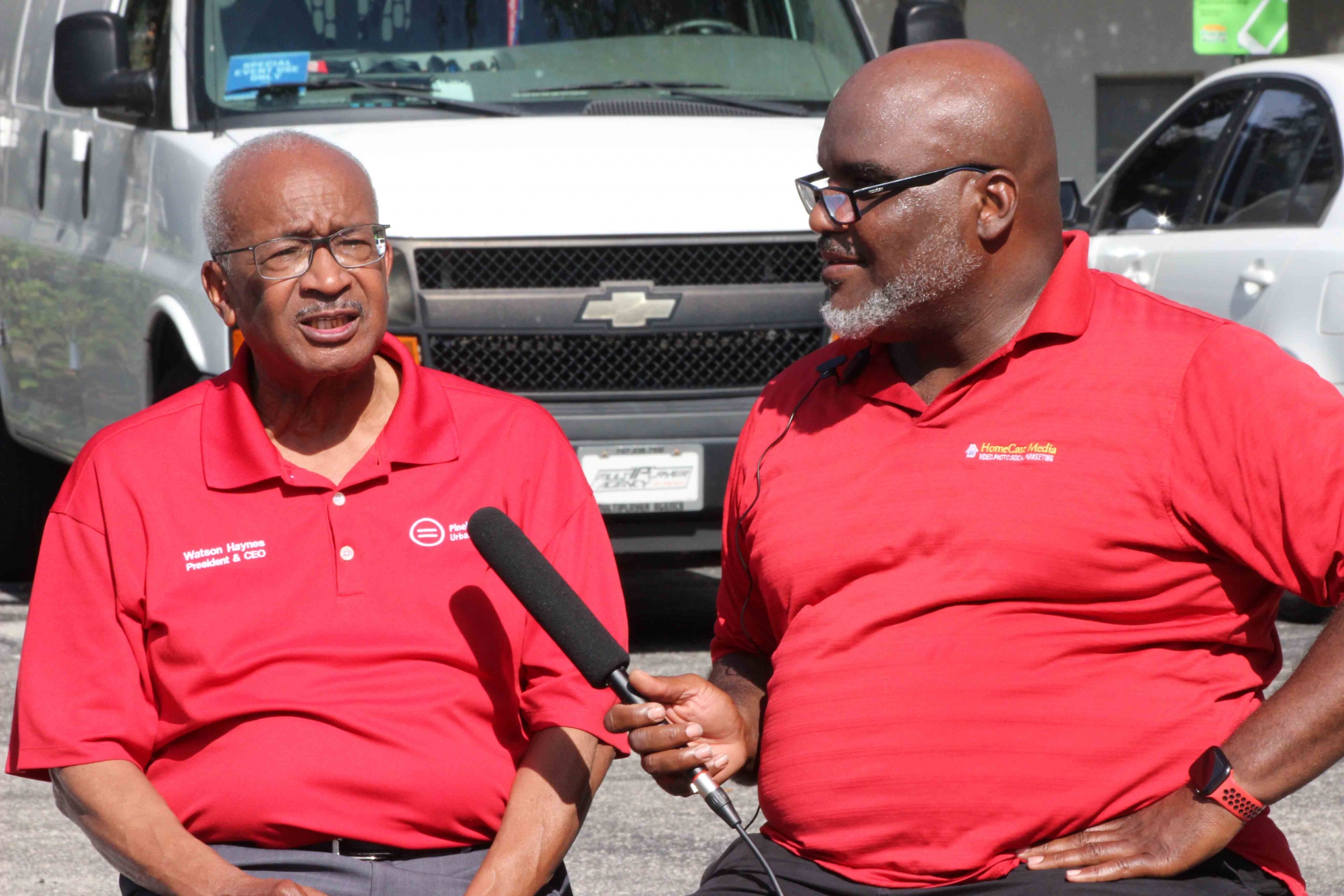
Watson Haynes, president of Pinellas County Urban League, was interviewed about growing up in the Gas Plant neighborhood.
“The city that did not want me down there, but I got a chance to look at my own city,” he said. “When people downtown didn’t want us to swim in Spa Beach, we had a better swimming place! We had Booker Creek where we could swim with the tadpoles!”
Haynes praised Mayor Rick Kriseman, whom he called “perceptive and open-minded,” for his efforts to redevelop the area. Kriseman acknowledged the reality that St. Pete was not a city of opportunity for all for a long time. When he became mayor, part of his vision was to focus on equity while making sure the city honored its past.
“Pursuing our future is also what today is about,” he said, “because you cannot pursue your future if you don’t know and respect and learn from your past.”
Since the Gas Plant and Laurel Park neighborhoods were razed with the promise of affordable housing and jobs that never materialized, Kriseman said it is essential to talk about and remember the disrupted and destroyed community that stood there before the baseball stadium.
“Today is a step toward reuniting the fabric of the community.” Kriseman said, “bringing us back together and recognizing not just that there are promises that we didn’t keep, but there’s a community that needs to be rebuilt.”
Kriseman, who is nearing the end of his last term, underscored the importance of continuing to hold elected officials accountable for “doing the right thing by this community.”
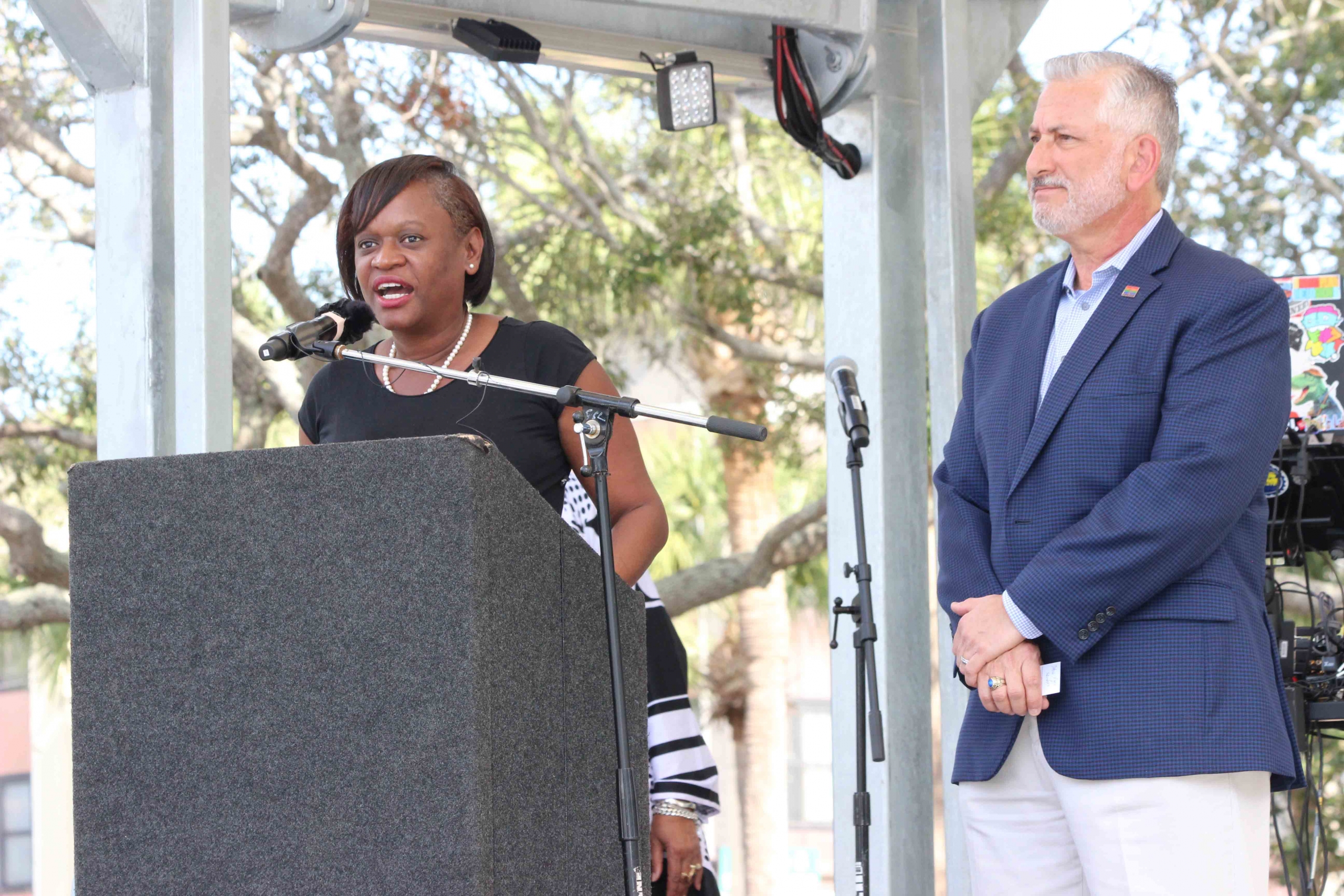
Deputy Mayor Dr. Kanika Tomalin and Mayor Rick Kriseman
Deputy Mayor Dr. Kanika Tomalin, who read names of her ancestors that grew up in the district, called the day of storytelling and reminiscing a special occasion for many reasons.
“But mainly, it is that our community gathers on this day to say to our broader community, ‘See us! Know us! Acknowledge our history, our value, our worth and celebrate it!'” she said.
The neighborhoods didn’t only represent a physical spread of land or even buildings that no longer stand, but the people that were a part of that community and their rich stories.
“When the people here think about those places, they don’t think about dilapidated buildings that needed to make way for change,” she continued. “They think about the stories of their lives. They think about the births and the death, and the graduations, and the weddings, and all of the many moments in life that came together right here.”
Mayor-elect Ken Welch’s family had roots in the Gas Plant district, and he even recalled his first job working for his grandfather (Flagmon Welch) at Welch’s Woodyard on Fifth Avenue and 16th Street South. That’s where he learned the value of hard, honest work, he recalled, and his grandparents’ house was the hub for family gatherings, daycare, afterschool care, and yes, Mrs. Gussie Welch was the neighborhood flip lady. Apparently, there are still some questions about which flavor was the best after all these years.
“My grandfather gave all of his money that he made working hard all day at the woodyard; he came home and gave it to my grandmother every night,” Welch said. “And they put four kids through college that way.”
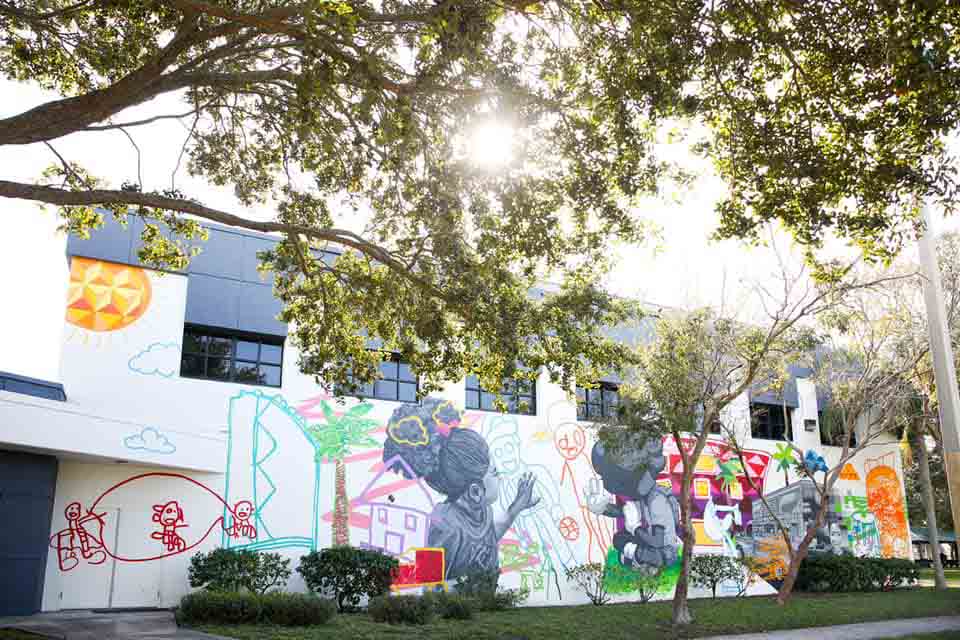
Local artists Jabari Reed, aka iBOMS, Reid Jenkins, and Carlos Culbertson, aka Zulu Painter, painted a colorful mural across the outer wall of the Campbell Park Recreation Center with the help of elementary and middle school youths.
The Gas Plant district nurtured and protected him as a young boy amid systemic racism and poverty, Welch said, adding that he didn’t understand as a kindergartener at Melrose Elementary in the last year of segregation that he was at a second-class school.
“The community, the family, nurtured me as a young person,” he said. “It sheltered me and thousands of other children of that era from the injustice and the discrimination of the time, and it prepared us all for success.”
His grandparents’ house, the woodyard, and Prayer Tower Church of God in Christ, his uncle Clarence Welch’s church on 14th Street, were all razed in the name of progress. The school board purchased his grandparents’ home to expand Sixteenth Street Middle School, which never materialized.
The woodyard sat precisely where the interstate I-175 came barreling through, and the church, like so many other buildings, was swept aside in the name of progress.
Welch quoted his father, the late David T. Welch, in a news report from 1982. David Welch was city council’s only Black member, having become the first to unseat a white incumbent in the city’s history.
“Forty years ago, in 1982, my father said: ‘When you went into this area and moved out all the people, you said you were going to rehabilitate and create light industry and create jobs. You have a moral obligation to those individuals who were moved out for what you have told them.’”
Welch said it is time for the moral obligation to those in the district to be fulfilled finally and the promises to be kept, which he intends to do as mayor. He also had a message to the business interests that plan to come here and profit from the city’s tremendous growth: “Equity is not only our desire, it’s not only what we’re asking for, it is a requirement for partnership with the city.”
To visually commemorate the Gas Plant and Laurel Park neighborhoods, local artists Jabari Reed, aka iBOMS, Reid Jenkins, and Carlos Culbertson, aka Zulu Painter, painted a colorful mural across the outer wall of the Campbell Park Recreation Center. The work features iconic imagery from the historic districts, including a large gas cylinder and a vegetable truck that used to drive through the streets of Laurel Park.
“The work they did was unbelievable!” Reese said. “They worked with elementary and middle school children at Campbell Park Recreation Center. These young students looked at pictures of Laurel Park and the Gas Plant area. They had a sketch pad, and they drew their renditions, and the artists projected them on the wall and painted it for them.”
Jenkins said for him, the best part of the project was watching the kids’ reactions when they saw their drawings on the wall.
“You can’t really ask for more than to see children buy into the community because that is the community, and that’s the future of it,” he said.
In his early 20s, Reed said he didn’t know much about the area before the destruction of the two Black neighborhoods, but it was his pleasure to bring the students’ creations to life, mixing the past and the present.
A microphone was passed around so former residents and descendants could announce themselves and give a brief history of their lives in these once vibrant neighborhoods. As the afternoon wrapped up, Reese — in the African tradition of one’s name holding immense power — called the names of former residents, businesses, churches, and schools that once lined the streets of the Gas Plant and Laurel Parks neighborhoods.
More stories from the Gas Plant/Laurel Park neighborhoods are to come in the following weeks.

